As 2019 comes to a close, it's time to review some of the biggest space science stories of the year.
From a world with three suns in its sky to lots of possibly habitable real estate, the past year has seen some incredible exoplanet discoveries. Here are 10 of the most memorable.
Related: The Greatest Spaceflight Moments of 2019
More: Kaboom! The Biggest Space Bloopers of 2019
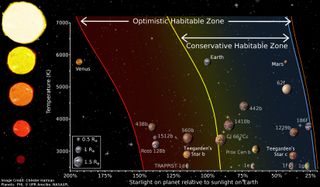
10. Teegarden's Star
In June 2019, researchers reported that they had found two Earth-like exoplanets circling a red dwarf known as Teegarden's Star, which lies only 12.5 light-years from Earth.
The newfound worlds complete one lap around their host star in just 4.9 and 11.4 Earth days, respectively. Despite these close orbits, they're still thought to reside in the "habitable zone" — the range of distances from a star that can support the existence of liquid water on a world's surface — because Teegarden's star is so dim.
From the data collected so far, scientists believe there might be more exoplanets to find in this system too.
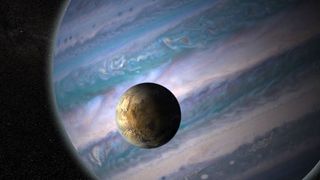
9. Ploonets
Who said space isn't adorable? In a preprint paper published on the website arXiv in July 2019, scientists gave a fanciful name to a class of wandering exomoons. In the scenario described in the paper, these exomoons were ripped from the gravitational pull of their host planet and pulled toward their host star.
No longer just a moon, but still not quite an exoplanet, these weird exomoons needed a special name. Previous research had thrown around "moonmoon," but the paper published in July landed on the much cuter "ploonet."
Ploonets are purely theoretical right now, but the paper showed how their journeys (and subsequent slow deaths) around their host stars might leave recognizable light signals. The researchers think that this light signature might explain some previously unexplained astronomical observations.
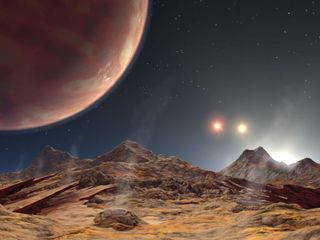
8. Three suns!
Thanks to a little help from NASA's Transiting Exoplanet Survey Satellite (TESS), scientists discovered a strange new exoplanet in a three-star system with a surface temperature around 320 degrees Fahrenheit (160 degrees Celsius.) The exoplanet, called LTT 1445Ab, is 22.5 light-years from Earth and, despite having stars in triplicate, appears to make an orbit around one of them every five days. The other two red dwarfs simply loom in the exoplanet's sky.
In addition to its novel setup, scientists say that the exoplanet would be a perfect candidate for future atmospheric exploration thanks to its positioning between the stars and Earth. Scientists believe this would make it possible for even ground-based Earth telescopes to make observations about the exoplanet.
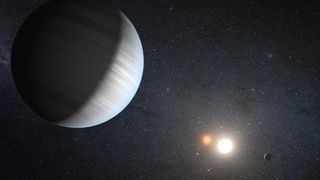
7. Gassy preteen with two suns
In March 2019, scientists used TESS data to discover a gassy, preteen exoplanet that researchers believe to be a mere 43 million years old. The exoplanet, called DS Tuc Ab, orbits one star in a two-star system once every eight days.
And because DS Tuc Ab is still relatively young, scientists are interested in learning more about what this world's history could tell us about the formation of planets in our own solar system. For example, DS Tuc Ab still experiences considerable losses of its atmospheric gas due to radiation from its host star. Scientists hope to extrapolate this knowledge about DS Tuc Ab to imagine what might happen to Earth and other planets closer to home if they were to lose their atmospheres.
Related: 10 Things That Blasted Through Space in 2019
6. GJ 357 d: A habitable world?
In July 2019, scientists used TESS data to find yet another treasure trove of possibly habitable exoplanets. The data identified three exoplanets in the dwarf star system GJ 357, which lies 31 million light-years from Earth.
Two of the planets — GJ 357 c and d — can be classified as "super-Earths," worlds slightly bigger than our own. Meanwhile, GJ 357 b is something called a hot Earth, meaning that, while its size might be Earth-like, its surface gets much hotter (about 490 degrees Fahrenheit, or 254 degrees Celsius) than that of our own planet.
GJ 357 d in particular has grabbed a lot of attention, because it may well fall into the coveted habitable zone. This planet completes one lap around the host star every 55 Earth days.
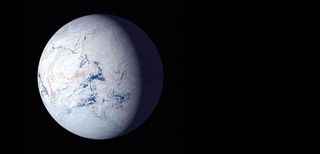
5. A snowball's chance
Scientists have been peering into Earth's baby book to learn a little more about a kind of exoplanet deemed a "snowball." At certain points in their lives, snowballs can become tidally locked with their host star, always showing it the same face, and as a result develop huge, eyeball-like icy oceans on that face.
Earth itself went through its own snowball phases as a younger planet. Because of this fact, scientists have speculated that snowball exoplanets may well be capable of sustaining life — and research published in July 2019 suggests they might even be better at it than originally imagined.
The paper focused on what might be happening on the land of these snowball planets instead of just their oceans. The study found that snowball planets would likely have relatively temperate inland zones, where temperatures hover around 50 degrees Fahrenheit (10 degrees Celsius) and above — something that Earth-like life could easily handle.

In August 2019, scientists reported finding a strange, football-shaped exoplanet shedding its atmosphere at a rapid rate — and losing heavy metals like iron and magnesium along with it. This big, puffy exoplanet, called WASP-121b, is something called a "hot Jupiter," and it orbits so close to its sun that its temperature is hotter than any other known planet — a whopping 4,600 degrees Fahrenheit (2,538 Celsius) in the upper atmosphere.
The proximity to its star not only heats up the exoplanet but also causes its football-like bulge as the star's gravity literally threatens to tear the exoplanet apart. Scientists were able to make this original observation using NASA's Hubble Space Telescope but hope to investigate the exoplanet further using the agency's James Webb Space Telescope, which is scheduled to launch in 2021.
3. Exoplanet water-vapor drama
A clash over exoplanet data ruffled a few feathers in September 2019 as scientists raced to be the first to report findings of alien-world water vapor.
The data in question was collected by a Université de Montréal-led team in 2016, 2017, and 2018 and suggested that the air of an exoplanet called K2-18 b features water vapor and clouds — a huge point of excitement for those searching for signs of alien life. But a team from University College London posted an analysis of this data around the same time the Canadian researchers did.
While such scientific scooping is not illegal — the data was open-access — some astronomers saw it as poor form. And the Canadian team leader said he wished the London team had consulted him about their plans.
The two studies interpreted the data somewhat differently, but both concluded that there is water vapor in K2-18 b's atmosphere. And that's a good thing, all the drama notwithstanding.
Related: Kaboom! The Biggest Space Bloopers of 2019

2. Starless exoplanets may orbit black holes
Using a computer model, scientists determined in October 2019 that starless, Neptune-like planets could form around and orbit supermassive black holes. Instead of calling a cozy solar system home, these exoplanets would live on the edge of, or about 10 to 30 light-years away from, a light-eating black hole and would be comprised of icy dust left in its wake. Based on their model, the scientists said that such voracious black holes could be host to tens of thousands of planets.
At least in theory, anyway; detecting such exoplanets would be extremely challenging. For example, astronomers couldn't use the most prolific planet-detection strategy, the transit method, to find such worlds. The transit method looks for dips in light that result when an exoplanet passes in front of its host start. But, because black holes eat light instead of emitting it, this obviously wouldn't work. So, scientists might have to rely on models and indirect methods for now.

1. Exoplanet collision?
Scientists have been observing a lot of warm dust in the star system BD +20 307, which is about 300 light-years from Earth. And they're starting to get excited, because this dust might be evidence of a fairly recent planetary collision. The observations were first made a decade ago and then reaffirmed in April 2019.
For scientists, this exciting possibility represents an opportunity to learn more about how such impacts affect the formation and evolution of planetary systems. This hits close to home, as it's believed that Earth's moon formed after a giant impact.
Follow us on Twitter @Spacedotcom or Facebook.

Bagikan Berita Ini















0 Response to "The Biggest Alien Planet Discoveries of 2019 - Space.com"
Post a Comment